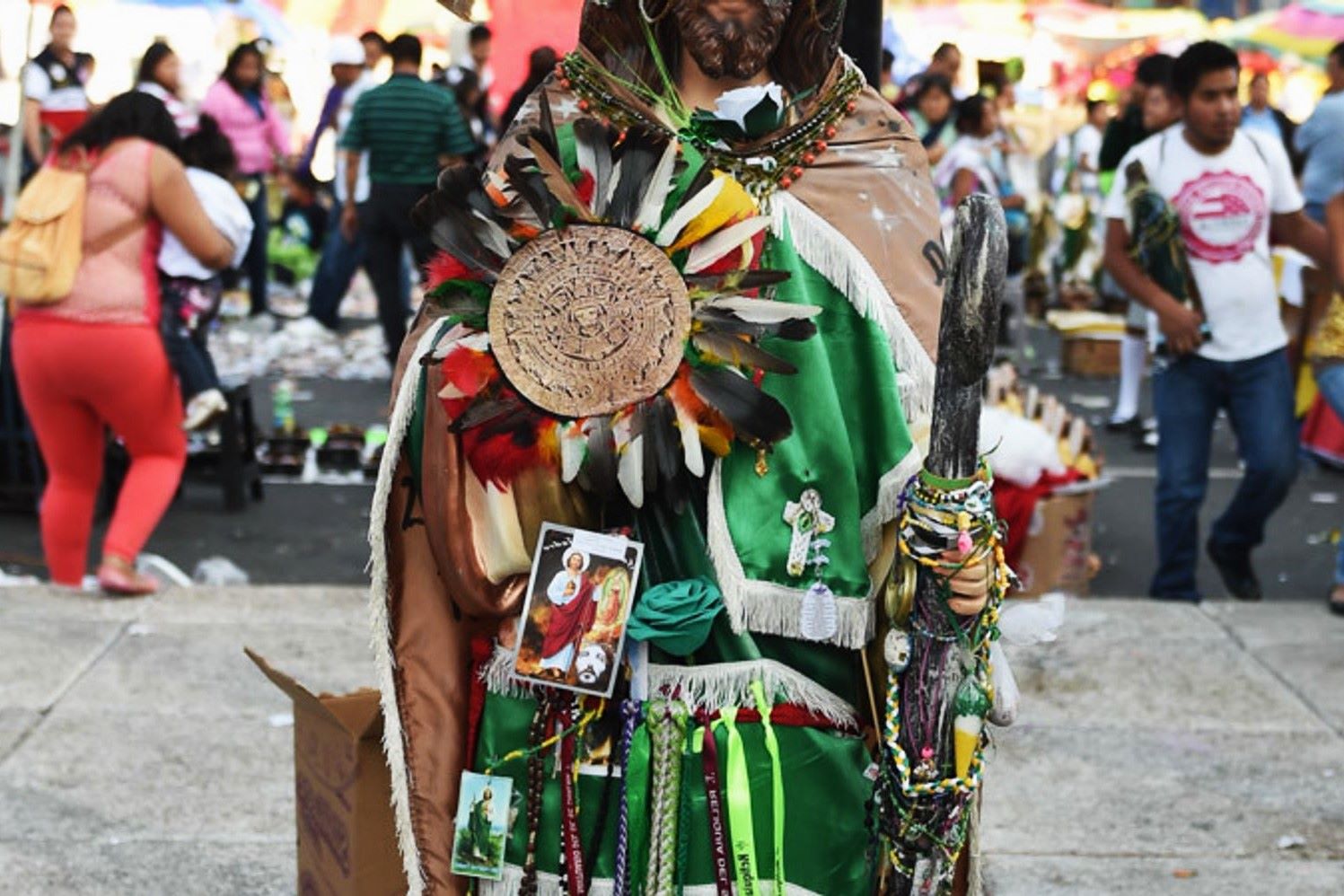The Surprising Connection Between St Jude And Mexico City’s Thieves & Delinquents

Have you ever wondered why St. Jude is the patron saint of lost causes and desperate situations? In Mexico City, this saint holds a unique place in the hearts of many, including some unexpected admirers—thieves and delinquents. Every 28th of the month, you can find crowds gathering at the Church of San Hipólito to honor St. Jude. Among them, you'll see people from all walks of life, including those who live on the fringes of society. They come seeking protection, forgiveness, and perhaps a bit of luck in their risky endeavors. This intriguing relationship between St. Jude and Mexico City's underworld offers a fascinating glimpse into the complexities of faith and survival in urban life.
The Unlikely Patron Saint
In Mexico City, St. Jude Thaddeus holds a unique place in the hearts of many. Known as the patron saint of lost causes, his influence extends beyond the usual realms of faith. Surprisingly, he has become a figure of reverence among thieves and delinquents. This connection might seem odd, but it’s deeply rooted in the culture and history of the city.
Monthly Pilgrimages
Every 28th of the month, thousands gather to honor St. Jude. The devotion is palpable, and the crowd is diverse, including those from the fringes of society. Here are some key locations where this phenomenon is most evident:
San Hipólito Church
Located in the heart of Mexico City, San Hipólito Church is the epicenter of St. Jude worship. On the 28th, the church overflows with devotees, including many who seek redemption or protection from the saint.Tepito Neighborhood
Known for its black market, Tepito is a place where St. Jude’s image is omnipresent. Many residents, including those involved in illicit activities, turn to him for guidance and protection.
Street Altars and Shrines
Throughout Mexico City, street altars dedicated to St. Jude can be found. These makeshift shrines are often maintained by those who live on the margins of society. They serve as a testament to the saint’s widespread appeal.
La Merced Market
In this bustling market, vendors and shoppers alike pause at small altars to offer prayers. St. Jude’s image is a common sight, symbolizing hope and resilience.Doctores Neighborhood
This area, known for its high crime rates, has numerous street shrines dedicated to St. Jude. Residents believe that the saint watches over them, providing a sense of security in a dangerous environment.
Tattoos and Symbols
Devotion to St. Jude goes beyond traditional worship. Many choose to permanently mark their bodies with his image, a sign of their unwavering faith.
Tattoo Parlors in Centro Histórico
Tattoo artists in this historic district report a high demand for St. Jude tattoos. For many, these tattoos are not just art but a protective talisman.Street Art in Iztapalapa
Murals and graffiti featuring St. Jude are common in Iztapalapa. These artworks reflect the deep connection between the saint and the local community, including its less savory elements.
A Complex Relationship
The bond between St. Jude and Mexico City’s thieves and delinquents is multifaceted. It’s a mix of faith, culture, and survival. Understanding this connection requires looking beyond the surface and recognizing the saint’s role in providing hope to those who feel lost.
Rehabilitation Centers
Some centers for former criminals and addicts incorporate St. Jude into their programs. They believe that faith in the saint can aid in the difficult journey of rehabilitation.Prison Chapels
Inmates often turn to St. Jude for solace. Chapels within prisons frequently feature his image, offering a beacon of hope to those seeking redemption.
The Unexpected Bond
St. Jude's connection to Mexico City's thieves and delinquents is a fascinating blend of faith, hope, and survival. Many see him as a symbol of redemption, offering a chance to turn their lives around. This unique relationship highlights the power of belief in the most unexpected places.
Understanding this bond gives insight into the complexities of human nature and the ways people seek solace. It’s a reminder that faith can be found in the most unlikely corners of society.
Next time you visit Mexico City, consider exploring this intriguing aspect of its culture. You might gain a deeper appreciation for the city's rich tapestry of stories and traditions. St. Jude's influence is a testament to the enduring power of hope, even among those society often overlooks.

